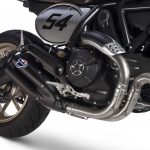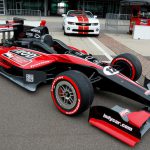Recent Posts

Семь (1995)

ZIGWheels: Latest News – Movies, Photos about ZIGWheels, The Economic Times

Wikileaks Unveils – Vault 7: The Largest Ever Publication Of Confidential CIA Documents; Another Snowden Emerges, Zero Hedge

What You Learn Driving the two thousand seventeen Mazda CX-5

What Does That Light on My Dash Mean? » News

VW recovers from emissions scandal as European car sales hop 9% in April, The Independent

Movie: Albuquerque teenage leads police on wild car pursue across town, KRQE News 13

UK Car Emissions Testing

Transportation Sector, Center for Climate and Energy Solutions

Title VII of the Civil Rights Act of 1964

Thieves arrive in stolen vehicle, steal SUV from Greenfield dealership, almost hit police squad on way out

There Is Now A Vending Machine For Luxury Cars, Zero Hedge

The Getaway Car

The car models affected by Takata airbag recall Yahoo7 News

The ten Best Cars of Reddit Autos: March 5th
auto magazines
The CAR T-Cell Race, The Scientist Magazine
The CAR T-Cell Race
Tumor-targeting T-cell therapies are generating remarkable remissions in hard-to-beat cancers–and attracting millions of dollars of investment along the way.
By Vicki Brower | April 1, 2015
BUILDING A BETTER T-CELL: By modifying T cells to express chimeric antigen receptors (CARs) that recognize cancer-specific antigens, researchers can prime the cells to recognize and kill tumor cells that would otherwise escape immune detection. The process involves extracting a patient`s T cells, transfecting them with a gene for a CAR, then reinfusing the transfected cells into the patient. © LUCY READING-IKKANDA L ast December, scientists at Juno Therapeutics reported at the American Society of Hematology (ASH) meeting that, in an ongoing Phase one trial, its chimeric antigen receptor (CAR) T-cell therapy, JCAR015, put twenty four of twenty seven adults with refractive acute lymphoblastic leukemia (ALL) into remission, with six patients remaining disease free for more than a year (ASH 2014, Abstract 382, 2014). This disease is utterly hard to treat and progresses rapidly when it becomes refractory; most patients die within a few months. «This response rate is unprecedented for patients who had stopped responding to all other treatments,» says Michel Sadelain, a founding director of Memorial Sloan Kettering`s Center for Cell Engineering and a cofounder of Juno.
Founded just a year earlier, the Seattle-based company now has four CD19-targeting CAR T-cell therapies in trials. The premise is ordinary: extract a patient`s T cells from blood and train them to recognize and kill cancer by modifying them with a viral vector to express an artificial, or chimeric, receptor specific for a particular cancer-associated antigen–in this case, CD19, an antigen voiced in B-cell–related blood cancers–then reinfuse the cells back into the patient. (See illustration at left.) The engineered cells recognize and kill cancerous cells, while reactivating other immune players that have been dampened by cancer`s inhibitory signals. «CAR therapy is at the same time cell therapy, gene therapy, and immunotherapy,» says Sadelain. «It represents a radical departure from all forms of medicine in existence until now.» Promising preclinical results have moved Juno`s CD19 therapies into trials for ALL, non-Hodgkin`s lymphoma, and chronic lymphocytic leukemia (CLL), and the company has three more CAR T-cell immunotherapies for a number of solid cancers close behind.
A few weeks after the ASH meeting, Juno went public for a whopping $264.6 million, the largest biotech initial public suggesting (IPO) of 2014. Within a month, the company`s valuation rose from $Two billion to $Four.7 billion, the largest among biotechs in a decade. By the end of 2016, the company plans to have ten drug trials for six diseases up and running using CAR T cells produced in a brand-new manufacturing facility.
And Juno is not alone. This relatively fresh sector is experiencing a madness of scientific activity, corporate partnering, and financing that took off in late 2013, continued via 2014, and moved straight into the fresh year with no sign of letting up. By now, most major pharmaceutical companies have hopped into the CAR T-cell arena. In the past two years alone, at least half a dozen companies have made deals worth hundreds of millions of dollars up front, with much more expected in the future as products budge through the pipeline. (See chart below.) This influx of funding is now supporting dozens of clinical trials.
While most of these studies are presently aimed at late-stage disease for which other therapeutic options have failed, researchers in the field anticipate that these immunotherapies could substitute standard cancer treatments in the future. «While we are evaluating these therapies in advanced cancer now, we absolutely believe that they have the potential to become frontline therapies,» Sadelain says.
Long time coming
CAR T-cell therapy has had a lengthy run-up to what may emerge to be overnight success. The very first CAR T cells were developed at the Weizmann Institute of Science in Israel in the late 1980s by chemist and immunologist Zelig Eshhar. In 1990, Eshhar took a year-long sabbatical to join Steven Rosenberg at the National Institutes of Health, where they ready CARs that targeted human melanoma. «We designed CAR T cells to overcome a number of problems in getting T cells to attack cancer,» says Eshhar. These problems included a tumor`s capability to escape immune recognition by muffling the major histocompatibility sophisticated molecules and the generally immunosuppressive tumor microenvironment.
Fresh AND IMPROVED CARs: Zelig Eshhar and Steven Rosenberg constructed the very first CAR T cells using a modular design, including a specific cancer-targeting antibody outside the cell, a transmembrane component, and an intracellular costimulatory signaling domain that amplifies the activation of the CAR T cells. Second- and third-generation CAR T-cell technologies have added extra costimulatory domains within the cells, as well as extra receptors to improve targeting of the T-cell attack and minimize side effects. © LUCY READING-IKKANDA
Eshhar and Rosenberg constructed the CAR T cells with a modular design that included a specific cancer-targeting antibody, and later added a costimulatory signaling domain that amplifies the activation of the cells, providing them a stronger signal to multiply and kill cancer cells. Since that early work, researchers in both academia and industry have developed and tweaked each section of the modular design. (See illustration above.) «Ultimately, we needed twenty years to learn how to supercharge these cells to produce anticancer activity,» says Arie Belldegrun, president and CEO of Kite Pharma in Santa Monica, California, which is assessing CAR T cells in six trials for B cell leukemia and lymphomas, and glioblastoma. Eshhar, a member of Kite Pharma`s scientific advisory board, resumes to collaborate with Rosenberg, who serves as a special advisor to the company.
Juno is now working on two second-generation CAR technologies that incorporate mechanisms to further amplify T-cell activation or to dampen it, in the case of adverse reactions. (See «Safety concerns.») These so-called «armored» chimeric antigen receptors are designed to combat the inhibitory tumor microenvironment by incorporating a signaling protein such as IL-12, which stimulates T-cell activation and recruitment. Juno believes «armored CAR» technology will be especially useful for solid tumors, whose microenvironment and potent immunosuppressive mechanisms can make raising antitumor responses more challenging.
Like Juno, Houston, Texas–based Bellicum Pharmaceuticals is working on refinements for next-generation CAR T-cell treatments. To better control antigen activation by its CAR T cells, for example, Bellicum is separating its dual costimulatory domain from the antigen-recognition domain, moving it onto a separate molecular switch that can be managed by the small-molecule drug rimiducid. These T cells, known as GoCAR-Ts, can only be fully activated when they are exposed to both cancer cells and the drug.
In addition to altering the components of the CAR T cells themselves, researchers are also experimenting with different methods to introduce the receptors into the patients` cells. At MD Anderson Cancer Center in Houston, Laurence Cooper and his colleagues are using a nonviral system called «Sleeping Beauty,» licensed from the University of Minnesota`s Perry Hackett, that relies on a transposon derived from fish to paste any desired gene into the genome. «This system employs electroporation [an electrified current] to introduce elements of the Sleeping Beauty system into T cells,» says Cooper, who hopes the system will be less complicated and cheaper to use than viral vectors.
While CAR T cells are being tested very first as monotherapies, researchers are also providing thought to how best to use CAR T cells with other immunotherapies in the future. «We are excited about combining checkpoint inhibitors such as PD-1 [programmed death-1] inhibitors and anti-CTLA4 [anti-cytotoxic T-lymphocyte antigen Four] drugs with CAR T cells,» Eshhar says.
A madness of deal making
Over the past few years, the industry has been a hive of activity, with a half dozen companies forging deals valued at more than a half billion dollars in total. In addition to the perceived financial potential of these therapies, the feeding madness may in part be attributable to the fact that regulatory authorities are providing CAR T-cell treatments priority review for packing unmet medical needs. Many of these therapies are receiving orphan or breakthrough status from the US Food and Drug Administration (FDA), bringing expedited regulatory review, which translates into earlier realization of financial benefits from more rapid market entry. In November 2014, for example, the FDA granted orphan status to Juno`s JCAR015. Kite`s KTE-C19 for refractory aggressive non-Hodgkin`s lymphoma also recently received the designation from both the FDA and the European Medicines Agency. And the University of Pennsylvania /Novartis`s CTL019 for ALL received breakthrough status last July.
The CAR T-Cell Race, The Scientist Magazine
The CAR T-Cell Race
Tumor-targeting T-cell therapies are generating remarkable remissions in hard-to-beat cancers–and attracting millions of dollars of investment along the way.
By Vicki Brower | April 1, 2015
BUILDING A BETTER T-CELL: By modifying T cells to express chimeric antigen receptors (CARs) that recognize cancer-specific antigens, researchers can prime the cells to recognize and kill tumor cells that would otherwise escape immune detection. The process involves extracting a patient`s T cells, transfecting them with a gene for a CAR, then reinfusing the transfected cells into the patient. © LUCY READING-IKKANDA L ast December, scientists at Juno Therapeutics reported at the American Society of Hematology (ASH) meeting that, in an ongoing Phase one trial, its chimeric antigen receptor (CAR) T-cell therapy, JCAR015, put twenty four of twenty seven adults with refractive acute lymphoblastic leukemia (ALL) into remission, with six patients remaining disease free for more than a year (ASH 2014, Abstract 382, 2014). This disease is enormously hard to treat and progresses rapidly when it becomes refractory; most patients die within a few months. «This response rate is unprecedented for patients who had stopped responding to all other treatments,» says Michel Sadelain, a founding director of Memorial Sloan Kettering`s Center for Cell Engineering and a cofounder of Juno.
Founded just a year earlier, the Seattle-based company now has four CD19-targeting CAR T-cell therapies in trials. The premise is elementary: extract a patient`s T cells from blood and train them to recognize and kill cancer by modifying them with a viral vector to express an artificial, or chimeric, receptor specific for a particular cancer-associated antigen–in this case, CD19, an antigen voiced in B-cell–related blood cancers–then reinfuse the cells back into the patient. (See illustration at left.) The engineered cells recognize and kill cancerous cells, while reactivating other immune players that have been dampened by cancer`s inhibitory signals. «CAR therapy is at the same time cell therapy, gene therapy, and immunotherapy,» says Sadelain. «It represents a radical departure from all forms of medicine in existence until now.» Promising preclinical results have moved Juno`s CD19 therapies into trials for ALL, non-Hodgkin`s lymphoma, and chronic lymphocytic leukemia (CLL), and the company has three more CAR T-cell immunotherapies for a number of solid cancers close behind.
A few weeks after the ASH meeting, Juno went public for a whopping $264.6 million, the largest biotech initial public suggesting (IPO) of 2014. Within a month, the company`s valuation rose from $Two billion to $Four.7 billion, the largest among biotechs in a decade. By the end of 2016, the company plans to have ten drug trials for six diseases up and running using CAR T cells produced in a brand-new manufacturing facility.
And Juno is not alone. This relatively fresh sector is experiencing a madness of scientific activity, corporate partnering, and financing that took off in late 2013, continued via 2014, and moved straight into the fresh year with no sign of letting up. By now, most major pharmaceutical companies have leaped into the CAR T-cell arena. In the past two years alone, at least half a dozen companies have made deals worth hundreds of millions of dollars up front, with much more expected in the future as products stir through the pipeline. (See chart below.) This influx of funding is now supporting dozens of clinical trials.
While most of these studies are presently aimed at late-stage disease for which other therapeutic options have failed, researchers in the field anticipate that these immunotherapies could substitute standard cancer treatments in the future. «While we are evaluating these therapies in advanced cancer now, we absolutely believe that they have the potential to become frontline therapies,» Sadelain says.
Long time coming
CAR T-cell therapy has had a lengthy run-up to what may show up to be overnight success. The very first CAR T cells were developed at the Weizmann Institute of Science in Israel in the late 1980s by chemist and immunologist Zelig Eshhar. In 1990, Eshhar took a year-long sabbatical to join Steven Rosenberg at the National Institutes of Health, where they ready CARs that targeted human melanoma. «We designed CAR T cells to overcome a number of problems in getting T cells to attack cancer,» says Eshhar. These problems included a tumor`s capability to escape immune recognition by muffling the major histocompatibility sophisticated molecules and the generally immunosuppressive tumor microenvironment.
Fresh AND IMPROVED CARs: Zelig Eshhar and Steven Rosenberg constructed the very first CAR T cells using a modular design, including a specific cancer-targeting antibody outside the cell, a transmembrane component, and an intracellular costimulatory signaling domain that amplifies the activation of the CAR T cells. Second- and third-generation CAR T-cell technologies have added extra costimulatory domains within the cells, as well as extra receptors to improve targeting of the T-cell attack and minimize side effects. © LUCY READING-IKKANDA
Eshhar and Rosenberg constructed the CAR T cells with a modular design that included a specific cancer-targeting antibody, and later added a costimulatory signaling domain that amplifies the activation of the cells, providing them a stronger signal to multiply and kill cancer cells. Since that early work, researchers in both academia and industry have developed and tweaked each section of the modular design. (See illustration above.) «Ultimately, we needed twenty years to learn how to supercharge these cells to produce anticancer activity,» says Arie Belldegrun, president and CEO of Kite Pharma in Santa Monica, California, which is assessing CAR T cells in six trials for B cell leukemia and lymphomas, and glioblastoma. Eshhar, a member of Kite Pharma`s scientific advisory board, resumes to collaborate with Rosenberg, who serves as a special advisor to the company.
Juno is now working on two second-generation CAR technologies that incorporate mechanisms to further amplify T-cell activation or to dampen it, in the case of adverse reactions. (See «Safety concerns.») These so-called «armored» chimeric antigen receptors are designed to combat the inhibitory tumor microenvironment by incorporating a signaling protein such as IL-12, which stimulates T-cell activation and recruitment. Juno believes «armored CAR» technology will be especially useful for solid tumors, whose microenvironment and potent immunosuppressive mechanisms can make raising antitumor responses more challenging.
Like Juno, Houston, Texas–based Bellicum Pharmaceuticals is working on refinements for next-generation CAR T-cell treatments. To better control antigen activation by its CAR T cells, for example, Bellicum is separating its dual costimulatory domain from the antigen-recognition domain, moving it onto a separate molecular switch that can be managed by the small-molecule drug rimiducid. These T cells, known as GoCAR-Ts, can only be fully activated when they are exposed to both cancer cells and the drug.
In addition to altering the components of the CAR T cells themselves, researchers are also experimenting with different methods to introduce the receptors into the patients` cells. At MD Anderson Cancer Center in Houston, Laurence Cooper and his colleagues are using a nonviral system called «Sleeping Beauty,» licensed from the University of Minnesota`s Perry Hackett, that relies on a transposon derived from fish to paste any desired gene into the genome. «This system employs electroporation [an electrified current] to introduce elements of the Sleeping Beauty system into T cells,» says Cooper, who hopes the system will be less sophisticated and cheaper to use than viral vectors.
While CAR T cells are being tested very first as monotherapies, researchers are also providing thought to how best to use CAR T cells with other immunotherapies in the future. «We are excited about combining checkpoint inhibitors such as PD-1 [programmed death-1] inhibitors and anti-CTLA4 [anti-cytotoxic T-lymphocyte antigen Four] drugs with CAR T cells,» Eshhar says.
A madness of deal making
Over the past few years, the industry has been a hive of activity, with a half dozen companies forging deals valued at more than a half billion dollars in total. In addition to the perceived financial potential of these therapies, the feeding madness may in part be attributable to the fact that regulatory authorities are providing CAR T-cell treatments priority review for packing unmet medical needs. Many of these therapies are receiving orphan or breakthrough status from the US Food and Drug Administration (FDA), bringing expedited regulatory review, which translates into earlier realization of financial benefits from more rapid market entry. In November 2014, for example, the FDA granted orphan status to Juno`s JCAR015. Kite`s KTE-C19 for refractory aggressive non-Hodgkin`s lymphoma also recently received the designation from both the FDA and the European Medicines Agency. And the University of Pennsylvania /Novartis`s CTL019 for ALL received breakthrough status last July.
